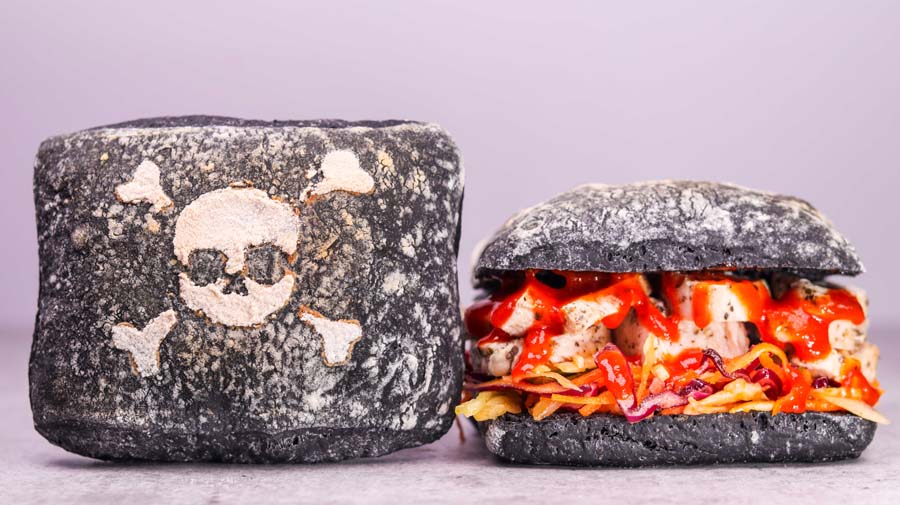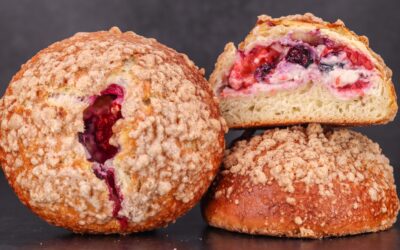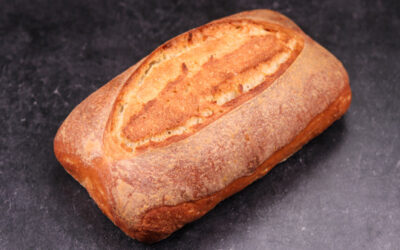Halloween’s coming up, so I though it’s a perfect time to use the activated charcoal I had in the cupboard leftover from previous projects like the black sourdough loaf and charcoal burger buns.
Activated charcoal was not designed to be a food colouring. It is commonly used for medical purposes to alleviate food poisoning or in the treatment of drug overdoses. It is perfectly safe to consume and will not have any effect on most people.
If you are on certain types of medication, then you should consult a doctor about it because activated charcoal may prevent some medication from being absorbed by the stomach.
When it comes to using it as an ingredient for breadmaking, it is totally odourless and tasteless. So, bread made using activated charcoal will taste just like regular bread. The only difference will be the cool black colour, which is perfect for Halloween sandwiches, if that’s a thing.
I will show you how to make ciabatta and focaccia using this recipe.
Watch the video down below for detailed instructions.
Ingredients
For the dough –
270g (9.5oz) white bread flour
30g (1oz) whole wheat flour
6g (0.21oz) activated charcoal
6g (0.21oz) salt
3g (0.1oz) instant dry yeast or 3.6g (0.12oz) active dry yeast or 9g (0.31oz) fresh yeast
230g (8.1oz) water*
*To learn more about no-knead bread dough temperature control click here.
Olive oil for greasing the fermentation vessel.
Toppings for the focaccia if you choose to make it. You can use anything you like.
The flour I use has a protein content of 13%. If your flour is weaker, then you may need to lower the hydration.
If you are using active dry yeast, then you may need to let it sit in the water for 10 minutes before adding the other ingredients or else it could take a lot longer to raise the dough.
Method
- In a large bowl combine the water, yeast, salt, whole wheat flour, and charcoal. Mix to dissolve the salt completely.
- Add the white bread flour and mix to a dough. *Desired dough temperature around 25C (77F).
- Place the dough in a greased bowl or deep tray. Cover.
- Chill for 30 minutes.
- Fold.
- Chill for 30 minutes.
- Cold ferment for 18 – 24 hours.
- Tip the dough out on a floured surface and stretch it to a flat rectangle shape. Trim and divide into portions.
- Place smooth side up on a non-stick paper lined baking sheet. Cover.
- Final proof for 1.5 hours. Pre-heat the oven to 250C (480F) fan off.
- Spray the surface with water and stencil the rolls.
- Place in the oven and turn the temperature down to 220C (430F).
- Bake for 17 minutes.
To make the focaccia –
- After cold fermentation place the dough on a non-stick paper lined baking tray with the smooth side up. Stretch out. Cover.
- Proof for 1.5 – 2 hours.
- Add toppings and press them into the dough.
- Bake at the same temperature as the ciabatta for 25 minutes.
Keep in mind that the conditions in each kitchen are different, so fermentation times may vary for you. It is up to the baker to control the bread and react accordingly.
Your oven may be different too, so your baking time may vary.
Watch The Video Here



